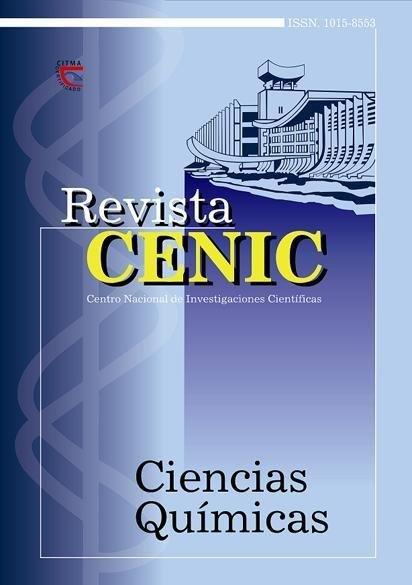Modelación hidrodinámica de reactor agitado para contacto gas-líquido
Abstract
The study was performed in a gas-liquid stirred reactor. The knowledge of flow residence time distribution inside the reactor, allows the prediction of its behavior. This information can be obtained by the application of the stimulus-response experimental method. This is the main objective of this study. So in order to characterize the flow patterns though the stirred reactor, it was necessary to perform a tracer test. This test for the determination of the residence time distribution with the use of sodium chloride as a tracer was carried out. Eq f(q) curves at different gas flow, liquid flow and agitation speed were obtained. The minimum agitation speed, which guarantees good gas dispersion into the liquid phase, was determined; the value obtained was 420 r/min . The model that adequately represents the flow pattern of the liquid phase was the one of well mixed reactor. The flow pattern of the liquid phase into the reactor was adequately represented by the well mixed reactor model. Moreover, the absence of dead zones and shortcircuiting starting from the analysis of the fundamental parameters of the applied hydrodynamic pattern was verified. These parameters characterize the mean residence time distribution for each experimental condition. They are the theoretical and experimental mean time of residence and the variance that indicates the width of the distribution. Finally model proposed by Cholette-Cloutier to corroborate the flow pattern proposed was used.

Downloads
Published
How to Cite
Issue
Section
License
Copyright (c) 2005 Copyright (c) 2005 Revista CENIC Ciencias Químicas

This work is licensed under a Creative Commons Attribution-NonCommercial-ShareAlike 4.0 International License.
Los autores que publican en esta revista están de acuerdo con los siguientes términos:
Los autores conservan los derechos de autor y garantizan a la revista el derecho de ser la primera publicación del trabajo al igual que licenciado bajo una Creative Commons Atribución-NoComercial-CompartirIgual 4.0 que permite a otros compartir el trabajo con un reconocimiento de la autoría del trabajo y la publicación inicial en esta revista.
Los autores pueden establecer por separado acuerdos adicionales para la distribución no exclusiva de la versión de la obra publicada en la revista (por ejemplo, situarlo en un repositorio institucional o publicarlo en un libro), con un reconocimiento de su publicación inicial en esta revista.
Se permite y se anima a los autores a difundir sus trabajos electrónicamente (por ejemplo, en repositorios institucionales o en su propio sitio web) antes y durante el proceso de envío, ya que puede dar lugar a intercambios productivos, así como a una citación más temprana y mayor de los trabajos publicados (Véase The Effect of Open Access) (en inglés).













